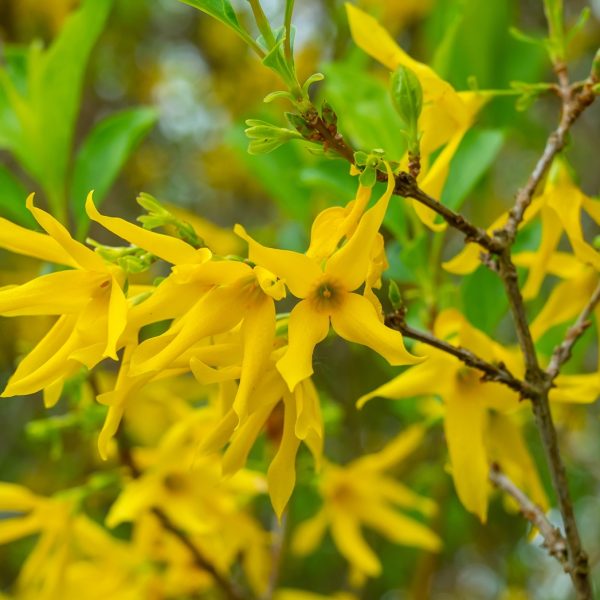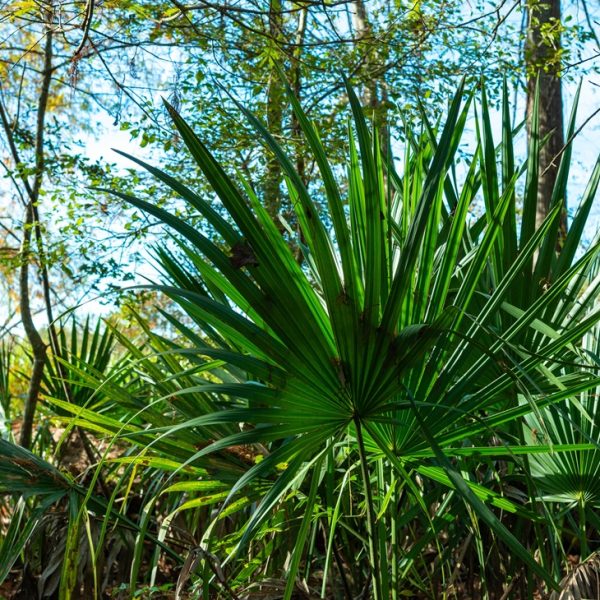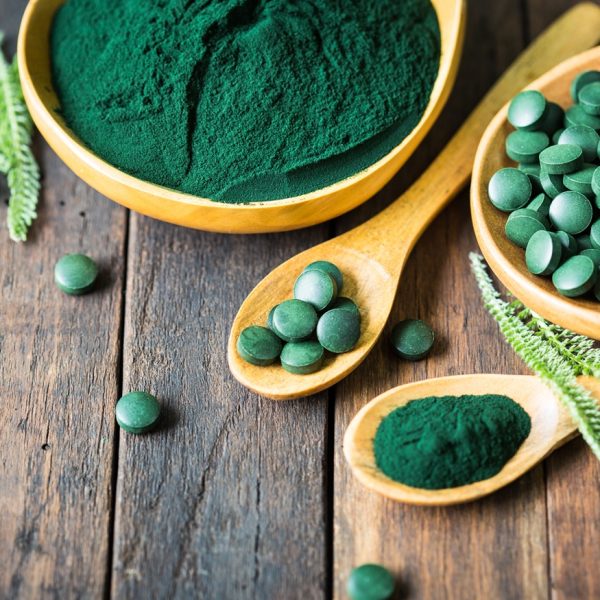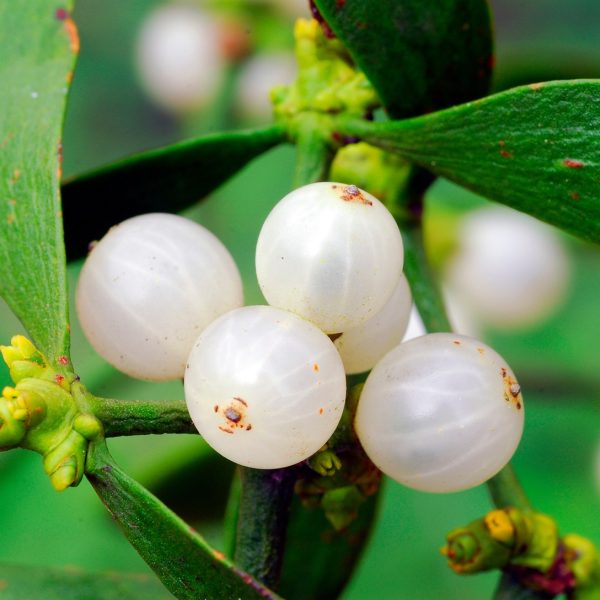-
How does it feel?
The distinctive minty aroma can be experienced as soon as the fresh leaves are crushed. Menthol is a key constituent of the essential oil in the mint family (it is actually a crystalline solid oil at room temperature, though liquefies at body temperature, i.e. upon tasting). Menthol activates the same nerve receptors as the experience of cold, thereby stimulating the cooling sensation of mint when ingested or inhaled.
A strongly brewed peppermint tea will elicit an immediate cooling effect in the mouth as a result of the menthol. This is then swiftly followed by other sensations of aromatic almost pungent flavours as the other volatile oils work through to the palate. Finally, the lasting effect is one of dryness and astringency as a result of the tannins.
-
What can I use it for?

Mints are ideal as a tea to help a wide range of digestive disorders including heartburn, dyspepsia, cramping, distension, colic, flatulence, nausea and vomiting (1). The tea can provide an almost immediate relief, and in these cases the strength of the tea can be increased to two or more tea bags per cup and infused for at least 15 minutes. Other herbs can also be included alongside mint to help settle digestive issues, including chamomile (Matricaria chamomila), fennel (Foeniculum vulgare), lemon balm (Melissa officinalis) or ginger (Zingiber officinale).
The benefits of peppermint oil in the treatment of irritable bowel syndrome (IBS) are well-supported by clinical trials (2). It may also have stronger effects in relieving dyspepsia, nausea, as well as gallbladder and bile duct pain. In this case, either use proprietary or prescription peppermint oil capsules, or add the oil to peppermint tea incrementally from 3 to 8 drops. Peppermint oil must never be swallowed neat and should be used cautiously with inflammatory diseases of the digestive system or gallstones.
Due to the menthol content, mint tea can also be used to relieve symptoms of coughs and colds. This can be both drunk and used as a steam inhalation to clear the airways. A small drop of peppermint oil can also be added to the steam inhalation to increase the decongestant effects (1,3).
Mints are known to uplift mood and clear the mind, as they are relaxing and help to relieve tension (1,3). There is evidence that peppermint can reduce palpitations or other cardiac symptoms of anxiety (4).
Peppermint oil applied to the skin may relieve neuralgia, pruritus and headaches and has been shown to heal cracked nipples during breastfeeding (5,6).
-
Into the heart of mint

The mint family all have high levels of essential oil containing menthol, which combined with the constituent menthone, gives the plant its distinctive scent and taste.
It is also the component responsible for mints’ medicinal activity. Menthol acts as an analgesic, working by cooling and alleviating muscle, circulatory and other pains, also separately relieving the strain and tension that may contribute to pain and headaches (7).
In the digestive tract, menthol will reduce the contractile responses of the digestive muscles, certainly by stimulating cold receptors in the stomach and possibly by inhibition of calcium influx into the smooth muscle of the gut wall (8). This helps to relieve heartburn, digestive cramping and colic. Menthol has been seen to enhance parasympathetic dominance, helping to lower heart rate and instances of anxiety and palpitations (9). Menthol can also activate GABA receptors, contributing to its calming effect on the nervous system (10).
Mint is sometimes described as having a warming and pungent effect in some traditions. However, when taken in high doses it has a diaphoretic effect, increasing perspiration by providing warmth. By increasing the production of sweat, it can reduce fevers and help to cool the body down.
Menthol is a volatile aromatic and when inhaled acts as a powerful decongestant helping to clear phlegm from the airways (11).
-
Traditional uses

Mints have been traditionally used in the relief of digestive disorders, and to balance the effects of stronger remedies, especially stimulating laxatives. Their beneficial actions on the digestive system extend to the use of the tea for nausea, as well as morning and travel sickness. Members of the mint family have traditionally been used as diaphoretics and to help bring down a fever.
Mints have often been used to clear nasal passages, to relieve coughing in bronchial conditions and pneumonia, and for the temporary relief of sore throats due to the menthol constituent. They have also been seen to promote digestive, kidney and liver functions. Women have used mint teas to relieve painful periods. Externally, peppermint oil has been used to relieve pain and itching, and as a mouthwash. Bruised fresh mint and peppermint oil have been applied to relieve headaches. They have a reputation for being mildly sedative, and were used in combination with other herbs to relieve nervous upsets. They also have a long history as flavouring agents for teas, medicines, food and drink (12).
-
Traditional actions
Herbal actions describe therapeutic changes that occur in the body in response to taking a herb. These actions are used to express how a herb physiologically influences cells, tissues, organs or systems. Clinical observations are traditionally what have defined these actions: an increase in urine output, diuretic; improved wound healing, vulnerary; or a reduction in fever, antipyretic. These descriptors too have become a means to group herbs by their effects on the body — herbs with a nervine action have become the nervines, herbs with a bitter action are the bitters. Recognising herbs as members of these groups provides a preliminary familiarity with their mechanisms from which to then develop an understanding of their affinities and nuance and discern their clinical significance.
-
Traditional energetic actions
Herbal energetics are the descriptions Herbalists have given to plants, mushrooms, lichens, foods, and some minerals based on the direct experience of how they taste, feel, and work in the body. All traditional health systems use these principles to explain how the environment we live in and absorb, impacts our health. Find out more about traditional energetic actions in our article “An introduction to herbal energetics“.
Chinese energetics
Western energetics
-
What practitioners say
 Digestive system
Digestive systemThe most useful role of peppermint is as a tea in the treatment of various digestive upsets. Individuals with dyspeptic, flatulent or colicky symptoms have a 50% chance of being relieved by peppermint tea, and the remaining 50% will not find this same relief. It is a simple first step for anyone to find out in which category they fall: if there is any relief at all from taking a cup of simple tea then it is worth making it stronger, by steeping the teabag for 15 minutes and possibly using two per cup. If there is no relief, an alternative warming remedy like fennel or ginger instead.
If peppermint is found to be effective, then chamomile can also be a consideration as well as the inclusion of stronger cooling bitter herbs such as dandelion (Taraxacum officinale), artichoke (Cynara scolymus), gentian (Gentiana lutea) or wormwood (Artemisia absinthium). Practitioners may use the oil, particularly in enteric-coated capsules, for bowel irritability and as an ingredient in liniments or other topical applications. For steam inhalations, gentler oils such as pine (Pinus) or aniseed (Pimpinella anisum) can be considered.
Indicated in heartburn, nervous digestion, flatulence, bloating, IBS, ulcers, nausea and anorexia. The tea can relieve gastritis and enteritis. The aromatic essential oils can help to alleviate morning sickness, vomiting and spasms in the gastrointestinal tract. The oil may relieve gallbladder pain, though should be used with caution with gallstones (13)..
Immune system
Commonly used as a hot tea to influence diaphoresis (sweating) in colds and flu. Especially when also inhaled it can help unblock airway congestion and is indicated where the lungs are congested with catarrh and constricted by spasms, wheezing or asthma (1,13).
Nervous system
Mint teas may relieve mental and emotional tension and especially cardiac effects of anxiety including high heart rate and palpitations due to its anxiolytic and antidepressant actions (9). The active compounds in peppermint modulate neurotransmitters including GABAergic and nicotinic receptors and therefore support cognitive function and reduce mental fatigue. It can also be used to clear brain fog and support memory and attention span (1,11).
Reproductive system
Indicated in menstrual congestion, dysmenorrhoea and amenorrhoea due to its ability to relax the smooth muscle in the uterus (1,14). . There is some evidence to point to the use of the tea in polycystic ovarian syndrome (PCOS) and other hormonal problems as a result of its anti-androgenic effect (15).
Skin
When applied topically, peppermint oil can cool and soothe inflamed skin, relieve hot flushes and pruritus (6). It has also been effective in soothing cracked nipples in breastfeeding mothers (5).
-
Research

A review of the bioactivity and potential health benefits of peppermint tea (Mentha piperita L.)
A review found peppermint tea to be effective in relieving symptoms of IBS. Several clinical trials also showed peppermint oil capsules in dosages of 0.2 ml three times daily to be effective in treating symptoms of IBS. In vitro studies also suggest potent antimicrobial, antiviral and antioxidant properties of peppermint (16).
Systematic review: herbal medicinal products for non-ulcer dyspepsia
Four randomised controlled trials were included to evaluate the effect of peppermint in the treatment of dyspepsia. Peppermint was administered in capsule form for a duration of between 1–8 weeks. All the studies found a reduction in symptoms of dyspepsia and 60–90% of patients reported improvements in symptoms including bloating, abdominal pain and discomfort compared with placebo (17).
Peppermint oil reduces gastric spasm during upper endoscopy: a randomized, double-blind, double-dummy controlled trial
This randomised, double blind controlled trial compared the antispasmodic effects of peppermint oil and hyoscine-N-butylbromide during GI endoscopy in 100 patients. The solution was administered intramuscularly and intraluminally and the percentage change in diameter between the maximal and minimal pyloric rings was examined. Results showed the opening ration was higher in the peppermint oil group over the hyoscine-N-butylbromide group. There were no significant side effects with the peppermint group, suggesting positive outcome for peppermint’s antispasmodic action (18).
Gastric cooling and menthol cause an increase in cardiac parasympathetic efferent activity in healthy adult human volunteers
A drink of ispaghula combined with peppermint capsules was administered to nine healthy volunteers. The participants had their ECG, respiration and blood pressure monitored five minutes before the drink and 115 minutes post ingestion. The combination of ispaghula and peppermint caused a cooling effect which resulted in a drop in heart rate and increased parasympathetic activity (9).
Volatile terpenes and brain function: Investigation of the cognitive and mood effects of Mentha × piperita L. essential oil with in vitro properties relevant to central nervous system function
A double blind, placebo crossover study investigated the effects of organic spearmint and peppermint essential oils on neurotransmitter receptor binding. Twenty four participants were given 50 µL and 100 µL doses of peppermint essential oil or a placebo, encapsulated in soft gels. Cognition and mood assessments in the form of rapid visual information processing (RVIP) and serial 3s subtraction task to assess fatigue were performed at baseline, one hour, three hours and six hours post ingestion. Results showed peppermint oil improved RVIP performance at 100 µL, and both doses reduced mental fatigue. These results are attributed to its cholinergic inhibitory, calcium regulatory and GABA/ nicotinic receptor binding properties (19).
Effect of spearmint (Mentha spicata Labiatae) teas on androgen levels in women with hirsutism
This observational study explored the effect of spearmint on 21 female patients (12 with PCOS) with hirsutism. Participants consumed one cup of spearmint tea twice a day for five days during the follicular phase of the menstrual cycle. Free testosterone levels were measured before and after, and they were found to have decreased after treatment, as well as an increase in LH, FS and oestradiol levels (15).
-
Did you know?
After-dinner mints started out as simple home remedies to relieve indigestion: they can still be used for this purpose!
Additional information
-
Botanical description
Mints are perennial herbs distinguished easily by the fresh minty scent and taste of their leaves. All mints have creeping rhizomes, from which new shoots grow up to 50–60cm in height. Mint leaves are finely serrated, and like other labiates the stems of the plant are square. The flowers of mint plants are often a pale purple and will form tight whorls around the stem. Several members of the mint family were introduced to Britain by the Romans and have become naturalised throughout Europe, often found growing in the wild close to water or waste ground.
Many familiar mints are actually botanical hybrids. Peppermint (Mentha x piperita) is a hybrid of M. spicata (spearmint) – itself a hybrid of M. longifolia and M. suaveolens – and M. aquatica (water mint). The two most common cultivated varieties of peppermint are M. piperita var. vulgaris (black mint) and M. piperita var. officinalis (white mint). Black mint has darker purplish stems and purple-tinged leaves (26).
Alternate botanical names
- Mentha piperita var vulgaris Sole (black peppermint)
- Piperita var officinalis Sole (white peppermint)
- Mentha spicata (spearmint)
- Mentha aquatica (water mint)
-
Common names
- Peppermint
- Horsemint (Eng)
- Pfefferminze (Ger)
- Pfefferminzblätter (Ger)
- Katzenkraut (Ger)
- Edelminze (Ger)
- Englische Minze (Ger)
- Menthe anglaise (Fr)
- Menthe poivrée (Fr)
- Feuilles de menthe (Fr)
- Menta prima (Ital)
- Menta piemonte (Ital)
- Menta peperina (Ital)
- Hierbabuena (Sp)
- Pudina (Hindi)
- Puthia (Hindi)
- Paparaminta (Sanskrit)
- Bo he (Chin)
- Pak hom ho (Chin)
- Bok hoh (Chin)
- Heung-fa-chio (Chin)
- Xiang hua cai (Chin)
- Po ho (Chin)
-
Safety
Mints are generally well tolerated, and adverse effects are mostly associated with peppermint oil, and may include contact dermatitis in some individuals (21). However, on the whole peppermint oil products are safe as long as the pulegone content is kept below 1% (22).
Sensitivity reactions rarely occur in the mouth and airways: young children are more susceptible than adults. The oil should generally not be used as a neat topical application or inhalation in infants. Perianal burning occasionally occurs following ingestion of peppermint oil capsules — this may be due to rapid bowel transit time, and may be avoided with adjustment of dosage (11).
The tannin-content may be associated with gastrointestinal irritation in some individuals. One clinical trial suggests that, due to its tannin content, peppermint inhibits iron absorption by 84% (24). Studies from Nigeria where glucose-6-phosphate deficiency is relatively common have associated menthol-containing skin applications with jaundice in infants (25).
There is no evidence of harmful effects from use in pregnant women in amounts normally found in food although such evidence is limited. There is insufficient evidence for its use in medicinal amounts for pregnancy and breastfeeding so it is best to consult with a medical herbalist for further guidance (26).
-
Interactions
Peppermint oil has been shown to inhibit cytochrome P450 enzymes in vitro (3, 11, 25).
-
Contraindications
Peppermint is contraindicated for bile duct obstructions, gastro-oesophageal reflux, liver damage, constipation, gallbladder inflammation or iron deficiency anaemia (1,3,13).
Avoid in known sensitivities to lamiaceae family or menthol (1,3,13).
-
Preparations
- Tincture
- Tea
- Essential oil
- Oil capsules
-
Dosage
- Tincture (1:5 in 45%): Take between 1–3 ml in a little water up to three times a day.
- Infusion: To make an infusion place between 3–6 g of dried material in one cup of boiling water, infuse gently for between 10–15 minutes. This should be drunk hot three times a day (11).
-
Plant parts used
Aerial parts
-
Constituents
- Volatile oil: 1–3% including the monoterpenes menthol (30–55%), methone (14–32%) and menthyl acetate (3–5%), limonene, pulegone, neomenthol and α- and β-pinene
- Flavonoids: Tannins (6–12%), luteolin, apigenin, hesperidin and eriodictyol
- Phenolic acids: Hydroxycinnamic acid and rosmarinic acid (1%)
- Bitter substances (11)
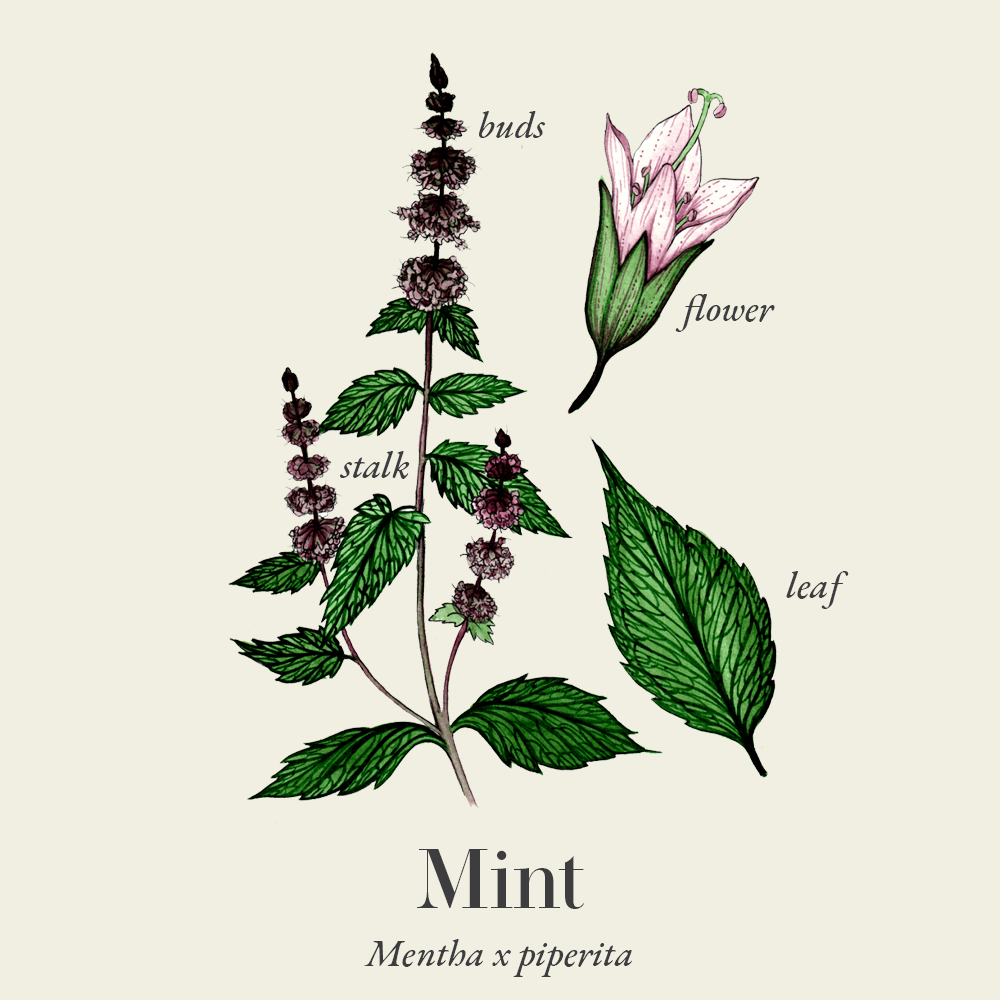
-
Habitat
Mint is traditionally native to Europe and China, but has now been widely naturalised to other temperature regions of the globe. It prefers a damp, moist soil and grows wild throughout the UK as well as being a common garden herb (26).
-
Sustainability
Mint is widely cultivated for its use in medicine, and although none of the species are threatened, farming methods pose a risk to soil health and biodiversity which is currently being addressed with more sustainable and regenerative methods (27). Mint grows in the wild in many places in Europe with no major threats (28).
Habitat loss and over-harvesting from the wild are two of the biggest threats faced by medicinal plant species. There are an increasing number of well-known herbal medicines at risk of extinction. We must, therefore, ensure that we source our medicines with sustainability in mind.
The herb supplement industry is growing at a rapid rate and until recent years a vast majority of medicinal plant produce in global trade was of unknown origin. There are some very real and urgent issues surrounding sustainability in the herb industry. These include environmental factors that affect the medicinal viability of herbs, the safety of the habitats that they are taken from, as well as the welfare of workers in the trade.
The botanical supply chain efforts for improved visibility (transparency and traceability) into verifiably sustainable production sites around the world is now certificated through the emergence of credible international voluntary sustainability standards (VSS).
Read our article on Herbal quality & safety: What to know before you buy and Sustainable sourcing of herbs to learn more about what to look for and questions to ask suppliers about sustainability.
-
Quality control
Herbal medicines are often very safe to take; however, their safety and efficacy can be jeopardised by quality issues. So, it is important to buy herbal medicines from a reputable supplier, from sources known to test their herbs to ensure there is no contamination, adulteration or substitution with incorrect plant matter, as well as ensuring that recognised marker compounds are at appropriate levels in the herbs.
Some important quality assurances to look for are certified organic labelling, the correct scientific/botanical name, and the availability of information from the supplier about ingredient origins. A supplier should be able to tell you where the herbs have come from, what contaminants are not in the herb, and what the primary compounds are.
-
How to grow
Mint is a perennial plant that is highly resilient and easy to grow. It can be grown in full sunshine or partial shade in any soil type although it prefers loamy and sandy soils. It is best to grow mint in a container due to its ability to spread widely to its surroundings.
Plants can be propagated from seed in autumn or spring. They can also be propagated from cuttings or by dividing the stems.
Sow indoors in pots or trays in late winter or early spring. To sow in late spring or early summer use the cold stratification method by keeping the seeds refrigerated for a few weeks. Keep the compost moist as germination can take several weeks.
Once the plants are big enough to handle they can be transferred into small pots or planted out in the summer. Mint will flower in the second year.
It prefers a damp soil, but waterlogging should be avoided. Generally speaking it is a resilient plant that will be fine in most UK gardens and only needs watering a few times a week. Ensure that the roots do not dry out during spells of hot weather (29).
-
Recipe
Majestic Mint tea
When you make this lovely mint tea, the first thing you can feel is the immediate cooling effect of the menthol in the mouth. Then other sensations come through: there are more aromatic, almost pungent flavours as the other volatile oils work through to the palate. As the last sensation you will probably pick up the dryness of the astringent tannins.
Ingredients
As many types of fresh mint as you can find (try peppermint, spearmint, horsemint and fieldmint) 10–20 g, about two handfuls
This will serve 2–3 cups of minty tea.
Method
- Put all of the ingredients in a pot.
- Add 500 ml/18fl oz of freshly boiled filtered water.
- Leave to steep for 5–10 minutes, then strain.
- Some people like a little sweetener with the mint – honey works a treat.
Let me glow tea
This delicious recipe is a healing blend of chlorophyll-rich herbs that purify the blood, soothe the liver and cleanse the skin, helping you glow from the inside out. Good for anyone with pimples, acne or other skin blemishes.
Ingredients
- Nettle leaf 3 g
- Fennel seed 2 g
- Peppermint leaf 2 g
- Dandelion root 2 g
- Burdock root 2 g
- Red clover 2 g
- Turmeric root powder 1 g
- Licorice root 1 g
- Lemon juice a twist per cup
This will serve two cups of beautifying tea.
Method
- Put all of the ingredients in a pot (except the lemon). Add 500 ml (18fl oz) freshly boiled filtered water.
- Leave to steep for 10–15 minutes, then strain and add the lemon.
These recipes are from the book Cleanse, Nurture, Restore by Sebastian Pole
-
References
- McKay DL, Blumberg JB. (2006) A review of the bioactivity and potential health benefits of peppermint tea (Mentha piperita L.). Phytother Res. 2006;20(8): 619–633.
- Thompson Coon J, Ernst E. (2002) Systematic review: herbal medicinal products for non-ulcer dyspepsia. Aliment Pharmacol Ther. 16(10): 1689–1699.
- Hiki N, Kurosaka H, Tatsutomi Y, et al. (2003) Peppermint oil reduces gastric spasm during upper endoscopy: a randomized, double-blind, double-dummy controlled trial. Gastrointest Endosc. 57(4):475–482
- Tate S. (1997) Peppermint oil: a treatment for postoperative nausea. J Adv Nurs. 26(3): 543–549.
- Inamori M, Akiyama T, Akimoto K, et al. (2007) Early effects of peppermint oil on gastric emptying: a crossover study using a continuous real-time 13C breath test (BreathID system). J Gastroenterol. 42(7): 539–542
- Khanna R, MacDonald JK, Levesque BG. (2014) Peppermint oil for the treatment of irritable bowel syndrome: a systematic review and meta-analysis. J Clin Gastroenterol. 48(6): 505–512.
- Grigoleit HG, Grigoleit P. (2005) Peppermint oil in irritable bowel syndrome. Phytomedicine. 12(8): 601–606
- Kligler B, Chaudhary S. (2007) Peppermint oil. Am Fam Physician. 2007;75(7):1027–1030
- Grigoleit HG, Grigoleit P. (2005) Pharmacology and preclinical pharmacokinetics of peppermint oil. Phytomedicine. 12(8): 612–616.
- Kline RM, Kline JJ, Di Palma J, Barbero GJ. (2001) Enteric-coated, pH-dependent peppermint oil capsules for the treatment of irritable bowel syndrome in children. J Pediatr. 138(1):125–128
- Anheyer D, Frawley J, Koch AK, et al. (2017) Herbal Medicines for Gastrointestinal Disorders in Children and Adolescents: A Systematic Review. Pediatrics 139(6): e20170062
- Sites DS, Johnson NT, Miller JA, et al. (2014) Controlled breathing with or without peppermint aromatherapy for postoperative nausea and/or vomiting symptom relief: a randomized controlled trial. J Perianesth Nurs. 29(1): 12–19
- Knowlton WM, McKemy DD. (2011) TRPM8: from cold to cancer, peppermint to pain. Curr Pharm Biotechnol. 12(1): 68–77
- Jordt SE, McKemy DD, Julius D. (2003) Lessons from peppers and peppermint: the molecular logic of thermosensation. Curr Opin Neurobiol. 13(4): 487–492
- Farco JA, Grundmann O. (2013) Menthol–pharmacology of an important naturally medicinal “cool”. Mini Rev Med Chem. 13(1): 124–131
- Strugala V, Dettmar PW, Sarratt K, et al. (2010) A Randomized, controlled, crossover trial to investigate times to onset of the perception of soothing and cooling by over-the-counter heartburn treatments. J Int Med Res. 38(2): 449–457
- Kazadi LC, Fletcher J, Barrow PA. (2018) Gastric cooling and menthol cause an increase in cardiac parasympathetic efferent activity in healthy adult human volunteers. Exp Physiol. 103(10): 1302–1308
- Eccles R, Griffiths DH, Newton CG, Tolley NS. (1988) The effects of menthol isomers on nasal sensation of airflow. Clin Otolaryngol Allied Sci. 13(1): 25–29
- Göbel H, Heinze A, Heinze-Kuhn K, et al. (2016) Oleum menthae piperitae (Pfefferminzöl) in der Akuttherapie des Kopfschmerzes vom Spannungstyp [Peppermint oil in the acute treatment of tension-type headache]. Schmerz. 30(3): 295–310
- Borhani Haghighi A, Motazedian S, Rezaii R, et al. (2010) Cutaneous application of menthol 10% solution as an abortive treatment of migraine without aura: a randomised, double-blind, placebo-controlled, crossed-over study. Int J Clin Pract. 64(4): 451–456
- Melli MS, Rashidi MR, Nokhoodchi A, et al. (2007) A randomized trial of peppermint gel, lanolin ointment, and placebo gel to prevent nipple crack in primiparous breastfeeding women. Med Sci Monit. 13(9): CR406–CR411
- Kennedy D, Okello E, Chazot P, et al. (2018) Volatile Terpenes and Brain Function: Investigation of the Cognitive and Mood Effects of Mentha × Piperita L. Essential Oil with In Vitro Properties Relevant to Central Nervous System Function. Nutrients. 10(8): 1029
- Moss M, Hewitt S, Moss L, Wesnes K. (2008) Modulation of cognitive performance and mood by aromas of peppermint and ylang-ylang. Int J Neurosci. 118(1): 59–77
- Goel N, Lao RP. (2006) Sleep changes vary by odor perception in young adults. Biol Psychol. 71(3): 341–349
- Akdoğan M, Tamer MN, Cüre E, et al (2007). Effect of spearmint (Mentha spicata Labiatae) teas on androgen levels in women with hirsutism. Phytother Res. 21(5): 444–447
- Jack AR, Norris PL, Storrs FJ. (2013) Allergic contact dermatitis to plant extracts in cosmetics. Semin Cutan Med Surg. 32(3): 140–146
- Nair B. (2001) Final report on the safety assessment of Mentha Piperita (Peppermint) Oil, Mentha Piperita (Peppermint) Leaf Extract, Mentha Piperita (Peppermint) Leaf, and Mentha Piperita (Peppermint) Leaf Water. Int J Toxicol. 20 Suppl 3: 61–73


